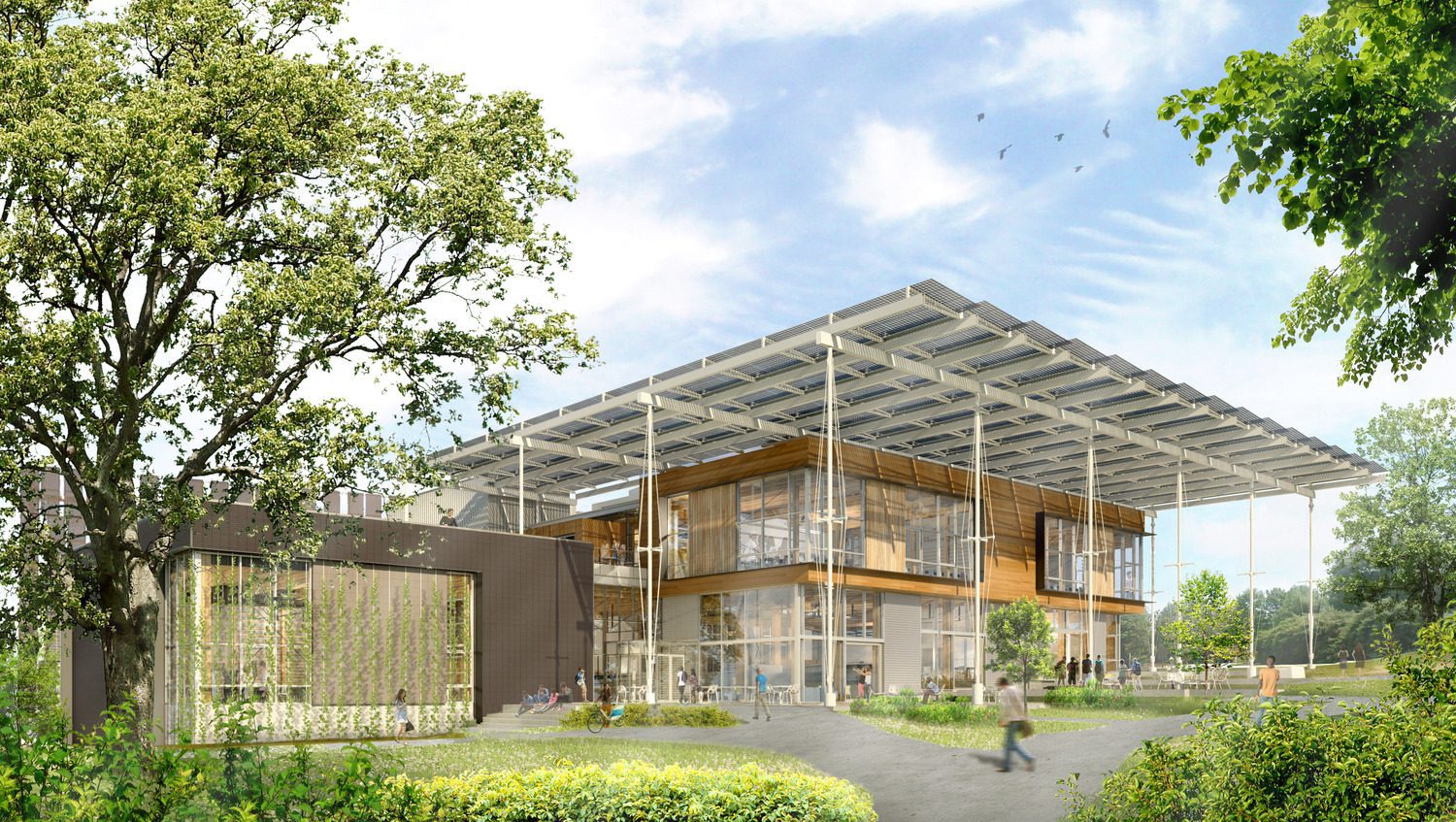
Research from Autodesk and Statista indicates that as the population grows and cities become denser, we’re going to have to construct 3,600 more buildings per day by 2050 to support the needs of urban dwellers.
All those construction projects translate to tons of building materials. Materials that, when sourced in an unsustainable manner, can wreak havoc on the environment.
But what if there was a better way to source materials and create beautiful, functional, and environmentally-friendly buildings?
As it turns out, there is.
Salvaging and reusing materials proves to be a solid alternative to traditional methods of sourcing materials to construct buildings. Aside from lowering your carbon footprint, building with salvaged materials also keeps waste out of landfills.
In the United States alone, we throw away 170 million tons of building materials. “That is, essentially, the equivalent of filling the Empire State Building 710 times,” says Shannon Goodman, Executive Director of Lifecycle Building Center. ”Thirty percent of that waste can be captured, salvaged, and brought back to the community, extending the lifecycle of the materials and lowering the embodied carbon of our natural resources — all while preventing the overcrowding of landfills.”
To accomplish that, we need to fundamentally shift how we design, build, and remove buildings. It’s a significant challenge, which is why organizations like the Lifecycle Building Center and projects like the Kandeda Building for Innovative Sustainable Design on Georgia Tech’s campus are so impactful. They’re helping us understand what we can create with reclaimed materials and how the practice can positively impact the environment and the community.
Founded in 2011, the Lifecycle Building Center is an organization based on sustainability. Its goal is to reduce solid waste disposal, promote resource efficiency, stimulate economic development, and empower every citizen to improve their own built environment.
Goodman says she was inspired to start the initiative when she realized how much materials could be salvaged and donated to organizations.
“I was working on a renovation of an existing building in Atlanta filled with useful materials, and we were able to save 62 tons of materials and donate them to 19 organizations. That is where the idea for the Lifecycle Building Center came from,” she says.
To date, over 200 nonprofits have received free salvaged materials from the Lifecycle Building Center, resulting in $3.7 million worth of savings for nonprofit groups. What’s more, the organization has helped divert over 6.7 million pounds of waste away from landfills.
Reusing construction materials may seem like a novel concept, but it’s been around for decades.
“Building material reuse is not a new phenomenon. Back in the early 1900s, it was common to reuse materials,” explains Goodman. “Buildings would be disassembled instead of destroyed. There's this instinct to use what's still useful.”
Reusing materials also have a positive impact on the three pillars of sustainability:
Environmental. Salvaging and reusing construction materials leads to lower carbon emissions, which helps curb global warming. It also extends the life of building materials, keeping them out of landfills and oceans, so there’s less pollution in the environment.
Social. Efforts around sustainability can inspire and empower the community to appreciate and care for their facilities. The reuse of materials also promotes sustainable development to protect the community and provide access to the resources that they need.
Economic. Organizations like the Lifecycle Building Center create jobs and promote workforce development. “We've created tremendous economic opportunity through job creation, workforce development, and job training. We've had 60 people receive 6,000 hours of training through Georgia Works,” says Goodman.
There are plenty of initiatives and organizations that are encouraging the industry to be more sustainable. One of the most notable programs is the Living Building Challenge, an international building certification program that promotes advanced sustainability in construction.
The Living Building Challenge has rigorous standards. To be certified, buildings must meet all advanced sustainability measures in seven categories: place, water, energy, health, happiness, materials, equity, and beauty.
Certification is only given after one full year of continuous occupancy when the facility has proven it has achieved net positive energy, net positive water, and net positive waste.
“The Living Building Challenge was founded on this idea of a flower. It's rooted in a place, it generates some waste, but it's brought back into life, and it regenerates that flower itself,” explains Goodman.
The Living Building Challenge requires buildings to incorporate salvaged materials for every 500 square meters of new design space. This is how the Lifecycle Building Center had become involved in the Kendeda Building — the second project in the Southeast that met the standards and certification imperatives of the Living Building Challenge.
“By salvaging materials from sites that are being demolished, the team could save on material costs and incorporate a sustainability aspect into the building,” says Jimmy Mitchell, Director of Project Solutions at Skanska USA. “We saved a few hundred thousand dollars incorporating salvage materials there,” says Mitchell.
Here are some examples of how the team used salvaged materials in the Kendeda Building.
Reusing heart pine joists from the Tech Tower. The Tech Tower was the first building at Georgia Tech, and it was built in 1888. The building was renovated in 2016 and part of that project involved removing the original 1880s heart pine joists.
Mitchell and his team captured those materials and incorporated them as stair treads in the Kendeda Building.
“They are gorgeous. They’re sanded at the top, but we left the bottom unsanded. I like knowing that I can peek underneath the stair and see the original joist sitting there. It touches the whole salvaged material side of things for me,” shares Mitchell.
Salvaging the slate tile from the alumni house. Another example was when the team reused the slate tile from the campus’ alumni house. The building was having roof leaks and had to be replaced. But the tiles were still reusable, so the design team incorporated them into the bathroom walls.
There are many important considerations in any sustainable construction project, which is why practices like reusing materials shouldn’t be an afterthought. Rather, they should be baked in right from the beginning of the project.
The real power in the future of this industry lies in how we design buildings in the first place.
According to Mitchell, “Designers have tremendous power in this process. Being able to see ahead of time, plan, and think about the buildings design is why the Kandeda building project was successful.”
In the case of the Kendeda Building, the project was designed from the start with disassembly in mind. It was a collaborative effort between architects, builders, and engineers to determine which materials still had value and figure out how to reuse them in the new building.
“This could really shift the industry to where we don't just have a demolition plan in our design, we have a salvage plan where things that are salvageable are pointed out in a set of documents, and they would be donated to organizations like Lifecycle Building Center,” says Mitchell.
He adds, “We've had our blinders on and we've kind of gone forward with the business as usual approach to generating a lot of waste and missing all these opportunities. Once you have this experience of working on a living building, it’s hard to go back. You really don’t want to go back to business as usual.”
Looking to the future, he says that regenerative concepts like the Living Building Challenge are what’s next.
Becoming more sustainable in construction starts with realizing the value of existing buildings and their materials.
Reusing building materials isn’t just about being cost-effective, but as Goodman puts it, it’s appreciating what they truly have to offer and knowing that these materials can transform buildings and communities.
“Each of these materials has a story. That's what we have to recognize to see everything around us in these buildings that we're taking down. These materials are not trash. That's what we have to discover,” says Goodman.
“We can have an amazing future for our communities if we can recognize this and work together to make it happen.”
See the power of sustainability and reuse in action in Autodesk’s documentary featuring the Kendeda Building for Innovative Sustainable Design. Watch the film now.

May we collect and use your data?
Learn more about the Third Party Services we use and our Privacy Statement.May we collect and use your data to tailor your experience?
Explore the benefits of a customized experience by managing your privacy settings for this site or visit our Privacy Statement to learn more about your options.